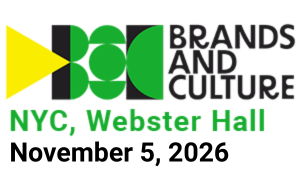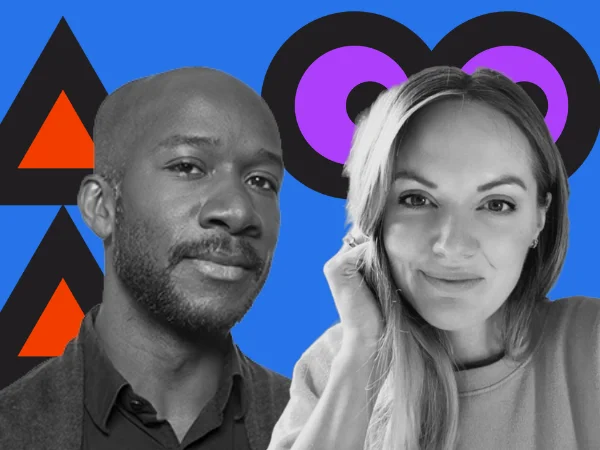Real-life snapshots of postpartum mums recently captured attention across the UK. Billboard ads of sweat-drenched, exhausted women fresh from the battle of the labour room, and eating Burger King as their first meal, fueled controversy and sparked debate. The “Bundle of Joy” campaign, created by BBH London, divided the industry, causing a rainbow of responses from outrage and disgust to applause.
Based on insight from a Mumsnet survey of 2,000 mothers – revealing that 39% of respondents would want burger or fries as their first post-birth meal – the creative team clearly knew its target audience: women.
Whether you believe the campaign exploited childbirth to promote fast food, or portrayed real women in a warts and all scenario, there is no denying that it touched on an unspoken societal taboo. In advertising, real women in the labour ward are usually hidden, but “Bundle of Joy” opened up an everyday lived experience for public view.
From childbirth to death, monogamy to menopause, puberty to parenthood, no subject is off-limits to brands that produce taboo-breaking work to shift culture and society, and build deeper relationships with their communities in the process.
Off-limits topics, saved for huddled conversations with close friends and loved ones, or kept as personal secrets, are brought out in the open, breaking down deep-rooted and complex social and cultural norms.
Cultural marketing at its best can deeply change culture and shift society. When it works, brands are responding to culture with work that changes society.
Periods, body hair, polygamy, cross-dressing, adultery and homosexuality, are all topics that are still so steeped in stigma and off-limits in ‘conventional’ society.
It’s a delicate alchemy of courage, conviction, confidence and authenticity that makes this kind of work resonate, and make its way into popular culture.
Tackling taboos leads to long term brand health
But breaking taboos isn’t just beneficial for wider society, it can also lead to brand growth. A recent report from Effie and Ipsos showed it can bolster effectiveness and boost advertisers a 21% rise in attention, according to Ipsos data.
We’re seeing more brands get comfortable with approaching uncomfortable topics, start tricky conversations and break down barriers to convention, and the impact can be exponential, opening up the conversation and reducing shame.
Take culture-breaking work from delivery service, DoorDash, that challenged one of the oldest stereotypes in the book: Flowers are only meant to be gifted to women. Riffing off the idea that most men don’t receive flowers until their funeral, the ‘Flowers for Every Valentine’ spot features animated men returning from the grave, singing to show the joy of receiving flowers while still alive. Launched on Valentine’s Day, it drove a 31% increase in sales and garnered more than 11M social impressions within the first two weeks, more than 2X the campaign goal.
Or how about “Taboo Totes” from Hygiene Brand Nana. In the Middle East, the majority of women continue to hide period products in public.
So this initiative, created by Saatchi & Saatchi Dubai saw women openly carry sanitary products to change the period narrative during Dubai Fashion Week. Capturing global attention, “Taboo Totes” engaged 40M people and influenced the international dialogue on sanitary pad shame, seeing a 37% drop in “pad taboos” vs. before the campaign.
Often, culturally impactful work just scratches the surface, using short-term shock tactics to build buzz and then quietly fades away again. But taboo breaking work goes way beyond a Brat summer, it buries deep into culture and makes long-term impact.
When brands really tackle taboos and cause cultural change they engage in an issue with a long-term vision, their actions can transform cultural and societal norms, break down stigmas, so the unsaid can be said.
Of course, as society shifts, so do taboos and what we deem acceptable changes. New taboos to break will be a constant. Brands that win are jumping on the cultural topics impacting people now.
Let’s take consensual non-monogamy, a relationship style that is growing globally. Over 40% of Gen Z Tinder users say they are open to or seeking non-monogamous relationships, a topic Gucci tackled in Gucci Guilty – a perfume ad starring A$AP Rocky, Julia Garner and Elliot Page in a potentially polyamorous scene.
To avoid it all backfiring, as we’ve seen happen to many brands, taboo-breaking work has to be authentic to the brand, and engage in culture and work alongside communities – tapping into the changing cultural attitudes and desires of people today.
It goes without saying that taboos are not there for every brand to break, it’s got to be relevant to the company and the product.
Let’s take a closer look at a brand leading the way. Dove’s “Real beauty” work was really the leader here. But feminine hygiene brand, Essity moved a category stuffed full of cliched images – picture women dancing happily in cornfields, or looking hot on their way to the gym while menstruating – into a whole new creative realm.
Tanja Gruber, Global Marketing Director at Essity, flipped the narrative, and looked at the hidden sides of periods, starting with the real colour of blood. Taking its community on a journey through the most intimate experiences and changing the narrative for women everywhere.
We dare you to (re)watch #Wombstories and not well-up.
Iconic work including Viva La Vulva, #Painstories, #Wombstories and #Bloodnormal have lifted the lid on women’s health issues: from endometriosis, to adenomyosis, to painful sex, to vaginismus, insomnia to miscarriage.
Essity grew its net sales by 31% to approximately SEK 38bn (£3.1bn) during the second quarter of 2022, despite implementing “significant” price increases.
#Wombstories alone is credited with driving a market share increase of 8.1% in the UK and 9.9% in Denmark shortly after it launched. But it feels like the cultural conversations it’s opened up are even more important.
Dismantling age-old taboos arguably comes with a huge dose of bravery and risk from the brands that venture into this unknown territory.
Speaking in Campaign, Vicki Maguire, Chief Creative Officer at Havas London, said “Advertising plays a huge role in normalising actions and behaviours and in shining a light on important issues. But as an industry we’re also extremely risk-averse on behalf of our clients, more content to jump on a bandwagon than to drive it. To affect real change we have to get out of our own way and to hell with the naysayers.”
Humour: an elixir for tackling off-limits conversations
Durex used humour to break through unspoken conversation in “Ladies, let’s lube”, raising awareness around female discomfort during sex
Andrex work asking people to get comfortable with bowel movements has attracted more love than distaste. It turns out consumers live in the real world.
Artists and creatives are the heroes of tearing down the barriers of social norms – Marina Abramovitch has stepped into shocking painful territory to uncover the deepest and darkest elements of human nature, opening up some deep and necessary conversations.
Advertising is a powerful force that can shape perceptions. In short, taboos need breaking. Stigmas need smashing. These topics need normalising. Whatever your thoughts on some of this work, you have to admit that true culture-led work has the opportunity to lead and change culture.



